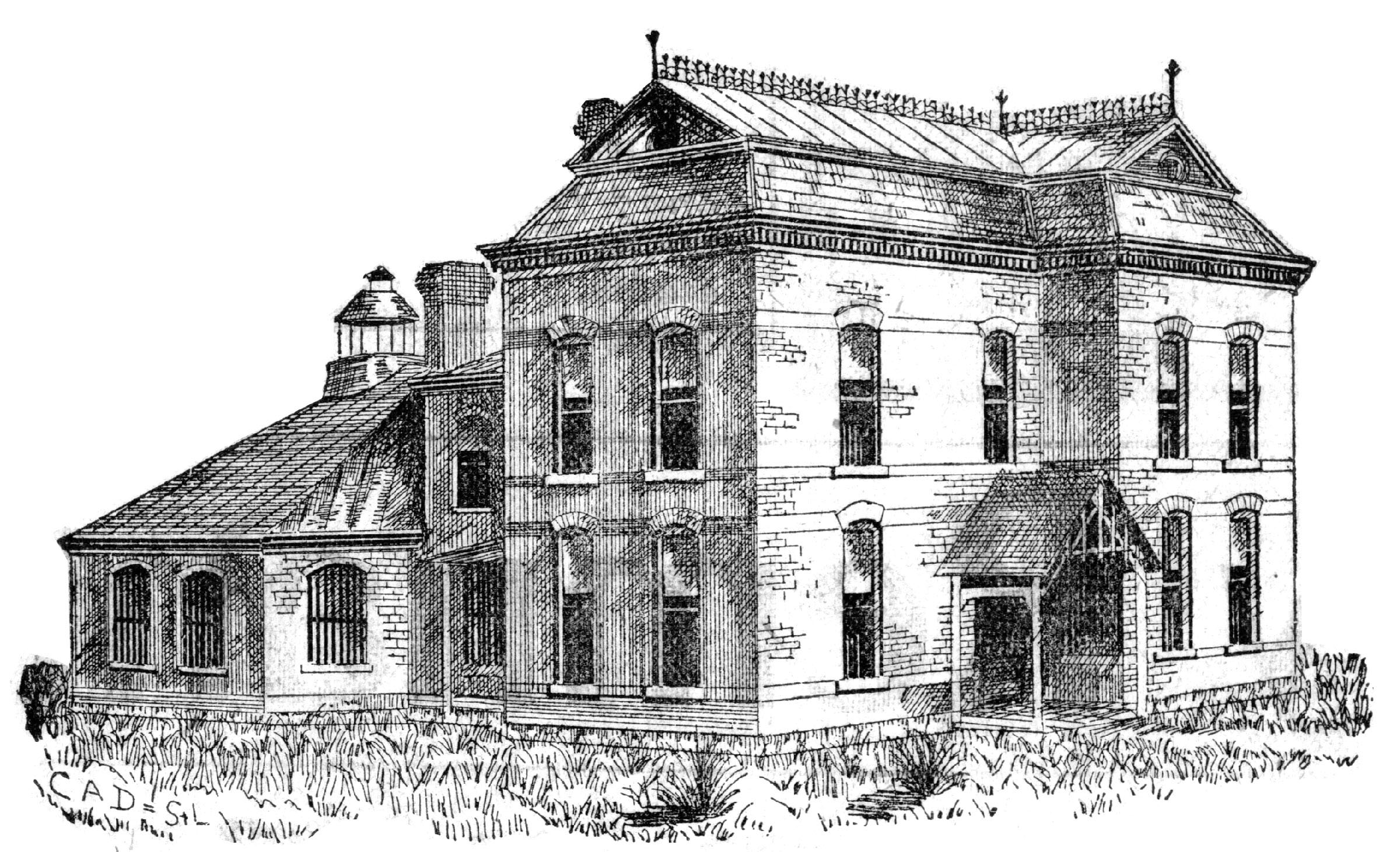Paul Armstrong (1869-1915) was born in Kidder in Caldwell County, MO. He didn’t live there long, but, still, he’s a native son worth mentioning.
Who, you may wonder, was Paul Armstrong? Well, at one time he was one of America’s most popular playwrights.

One of America’s most popular playwrights was Paul Armstrong, born in Kidder, MO, on April 25, 1869. For an 8-year period his plays were hits on Broadway, including an O. Henry story made into films. “The Deep Purple” is considered one of the earliest crime plays.
Paul Armstrong was born on April 25, 1869, in Kidder, the son of Richard and Harriet (Scott) Armstrong. His parents then moved to Bay City, Michigan, where his father engaged in the steamship business.
At age 21, Armstrong secured a license to be captain of steam-vessels and for a short time was on a steamer plying the Great Lakes. He wanted to be a writer, but many of his short stories were uniformly rejected by the publishers. He decided to enter literature by the backdoor of journalism.
He went to Buffalo and wrote for the Express, the Courier, and the News. One of his first assignments on the Express was a murder mystery which he unexpectedly helped to solve. He next worked for the Chicago Times-Herald.
Next, he moved to New York and under the penname of “Right Cross” wrote sports columns for the New York newspapers. Meanwhile he had become interested in writing for the theatre.
His first play, “Just a Day Dream”, was produced by a Boston stock company. For the next eight years Armstrong was one of the most popular of American playwrights.
His Broadway plays included The Blue Grass Handicap (1904), The Superstition of Sue (1904), The Heir to the Hoorah (1905), Salomy Jane (1907), Society and the Bulldog (1908), Via Wireless (1908), Going Some (1909), Alias Jimmy Valentine (1910), The Deep Purple (1911), The Greyhound (1912), The Escape (1913), The Bludgeon (1914), and The Heart of a Thief (1914).
Of these plays, Alias Jimmy Valentine is probably the best remembered, as it was based on an O. Henry story, and made into films in 1915 and 1928. The Deep Purple is considered one of the earliest crime plays.
Looks like our Kidder native finds himself among some pretty impressive personalities! “Among those noticed on Main Street were –” was a caricature by the artist Marius de Zayas. The caricature is of 52 well-known people of the time. The time was between 1910 and 1920.

This caricature by the artist Marius de Zayas shows 52 well-known people between 1910 and 1920. Shown, from left, are Mr. & Mrs. Vincent Astor, Jacob H. Schiff, George J. Gould, Mrs. William K. Vanderbilt, Herman Sielcken, Andrew Carnegie, Mrs. O.H.P. Belmont, Mrs. Ogden Mills, Guillo Gatti-Casazza, Mr. & Mrs. W.A. Clark, Mrs. James B. Haggin, Mrs. Harry Payne Whitney, Mrs. Adrian Iselin, Mr. & Mrs. Reginald Vanderbilt, Mrs. John Jacob Astor, Mrs. William K. Vanderbilt, Jr., Mrs. Arthur Scott Burden, Mr. & Mrs. Henry Clews, Reginald DeKoven, Major Creighton Webb, R. Thornton Wilson.

Left to right, Judge Peter Barlow, Winthrop Ames, Margaret Illington, Paul Armstrong, Lee Shubert, W.R. Hearst, Jerome Siegel, Nazimova, John Drew, Flo. Ziegfeld, Lydia Lopoukowa, Victor Herbert, David Belasco, Charles F. Murphy, May Irwin, Douglas Fairbanks, Theodore Liebler, Frank Daniels Sam Harris, Fritzi Scheff, Mr. & Mrs. Lillian Russell, Joe Weber, Raymond Hitchcock, J.J. Shubert, Henry Miller, Roszicka Dolly, and W.A. Brady.
About 1913 Armstrong’s health began to fail and his work to lose its grip. Armstrong died from heart-failure at his home in New York City on August 30, 1915.
Armstrong was twice married. His first wife was Rella Abell, of Kansas City, whom he married in London, July 24, 1899. She became a playwright herself.
On Dec. 12, 1913, Armstrong married Catherine Calvert of Baltimore, who had starred in several of his plays and who later became a prominent moving-picture actress. They had one son.
As an interesting side note, Armstrong’s nephew was Robert Armstrong. He starred in the earliest version of the film, King Kong (1933), as big-time promoter Carl Denham. The film also began co-star Fay Wray on the road to stardom. It set Robert up for a plethora of leading man and second lead roles he would play through the 1930s.
As a final note, Paul Armstrong, the playwright, was also a song writer. He composed the lyrics to Old Glory Goes Marching On (Flag That Never Knew Defeat); Just a Necklace of Two Little Arms; and Will the Angels Guard My Daddy Over There and many other songs for World War I.

Paul Armstrong wrote the lyrics for “Old GLory Goes Marcing On” made popular during World War I. The sheet music featured an unusual photo of the American flag. In the white ball at the end of the pole are 250 men. The pole required 700 men to form it. It took 1600 men for the white stripes, 1900 men for the red stripes, 1800 men for the stars, and 3400 men for the blue field.

